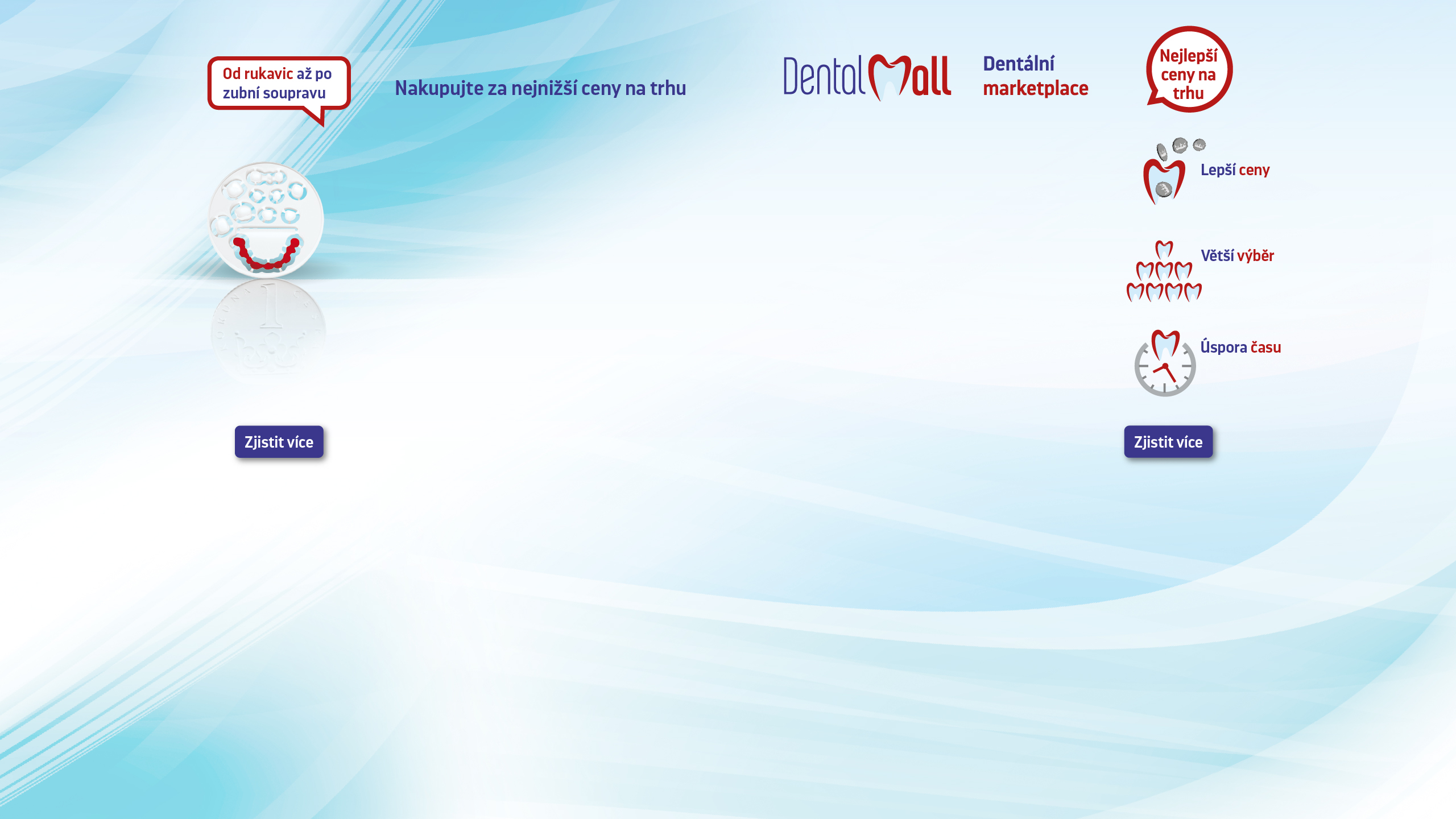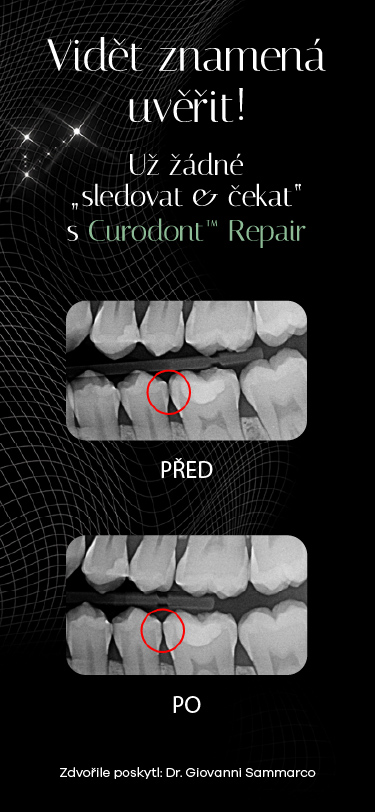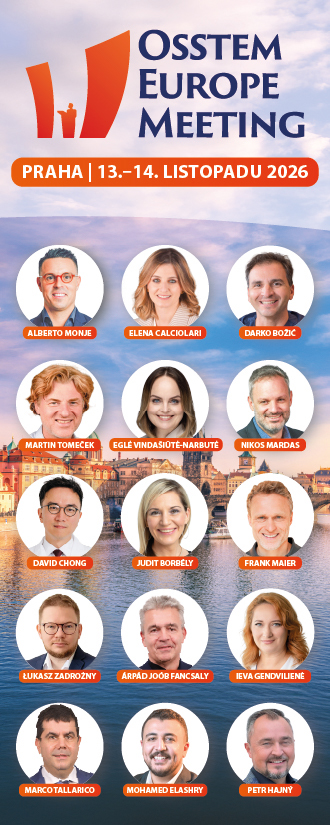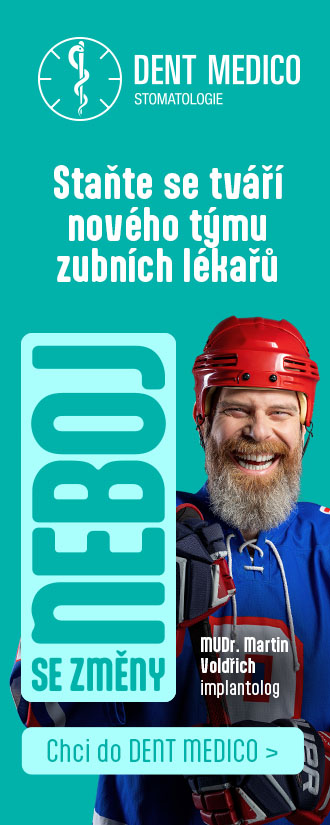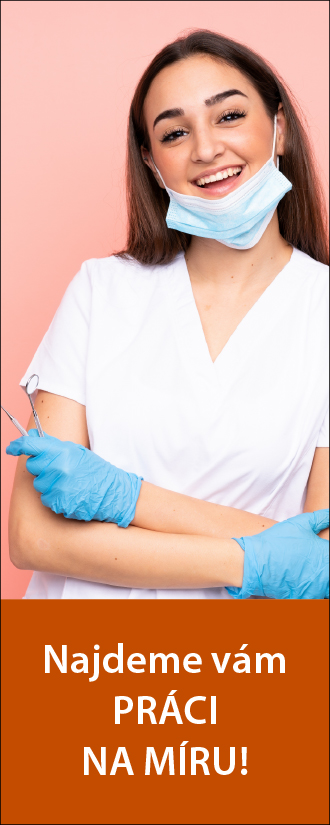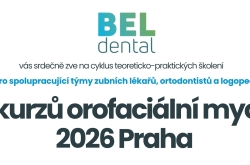Intraorální opravy sklokeramických náhrad
Materiálová věda a klinický postup
Intraorální opravy malých a snadno dostupných defektů sklokeramických náhrad nabyly v posledních letech ve stomatologii na značném významu. Oproti kompletní výměně náhrady má její oprava pomocí kompozitních materiálů tu výhodu, že lze zpravidla zachovat velké, dosud neporušené části původní náhrady a není nutno více narušit tvrdé zubní tkáně a zvyšovat riziko pro dřeň u vitálních zubů. V porovnání s kompletní výměnou náhrady jsou intraorální opravy zpravidla jednodušší, ekonomičtější a mnohem rychlejší – lze je provést během jedné návštěvy pacienta.
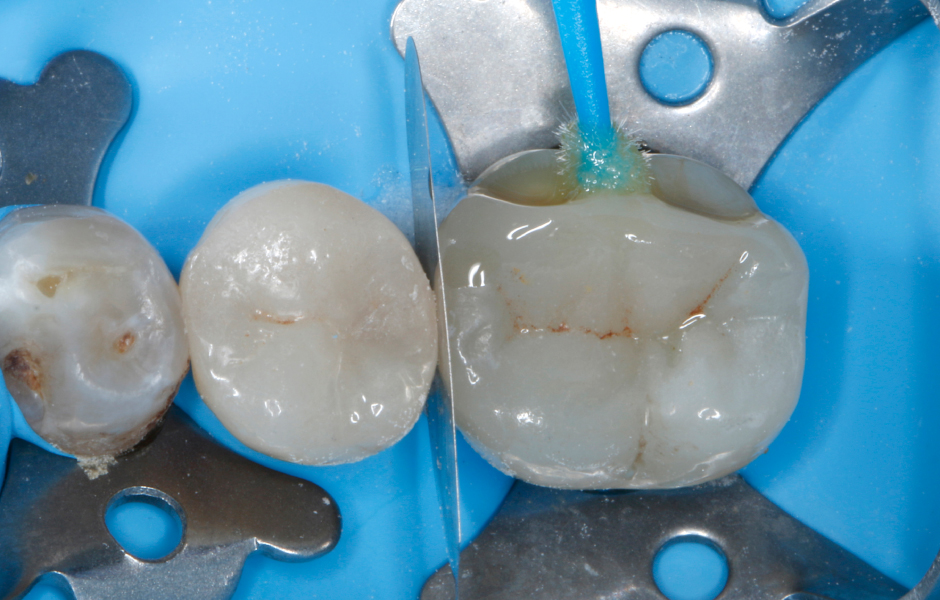
Úvod
Keramické náhrady
Keramické, respektive celokeramické náhrady mají řadu výhod, jako jsou příznivé optické vlastnosti v kombinaci s vynikající estetikou, dobrá odolnost proti opotřebení a barevná stálost, inertní chemické chování a z toho vyplývající vysoká biokompatibilita i možnost opětovné stabilizace oslabené struktury zubu díky adhezivní fixaci, díky kterým si za posledních 30 let získaly velkou oblibu jak u lékařů, tak u pacientů [1–14]. Mnoho pacientů navíc vyjadřuje touhu po estetických náhradách v barvě zubů a nekovových alternativách k tradičním protetickým postupům [15].
Keramika je podle definice nekovový, anorganický materiál [16]. Keramiku používanou v rekonstrukční stomatologii lze podle složení a struktury rozdělit do následujících skupin [17–18]:
- Silikátová keramika (živcová keramika a sklokeramika, přírodní nebo synteticky vyráběná živcová skelná matrix se zapuštěnými krystaly leucitu nebo lithium disilikátu).
- Oxidová keramika infiltrovaná sklem (porézní báze většinou z Al2O3 infiltrovaná skelnou fází).
- Polykrystalická oxidová keramika (Al2O3 nebo ZrO2 bez skelné fáze).
Mezi nejčastější klinické indikace celokeramických náhrad patří inleje, onleje, částečné korunky, monolitické korunky, můstky a fazety – významnými se také stávají distálníokluzní fazety (table tops) [17, 19–31]. Celokeramické náhrady dosáhly velmi vysokého standardu kvality a staly se nepostradatelnými pro moderní rekonstrukční stomatologii, a to jak v esteticky náročné frontální oblasti, tak v laterální oblasti chrupu, která nese okluzní zátěž. Vědecká literatura dokumentuje vysokou úroveň spolehlivosti a vynikající klinické údaje o funkčnosti celokeramických náhrad, pokud je na začátku léčby stanovena správná indikace a jsou zohledněna omezení materiálu nebo pacienta a je z různých dostupných typů keramiky zvolen správný materiál pro konkrétní případ. Kromě bezchybného výrobního procesu náhrady by měla být použita precizní preparace proteticky ošetřovaného zubu a vhodná technika upevnění náhrady [15, 28, 32–51]:
Poškození související s frakturami
Přes své příznivé vlastnosti mohou celokeramické náhrady samozřejmě selhat, a to kdykoli během klinického období používání v důsledku biologických (např. sekundární kaz, endodontické nebo parodontologické problémy) a mechanických či technických příčin (např. odštípnutí či kompletní fraktura keramiky, fraktura ošetřovaného zubu, ztráta retence náhrady) [52]. Selhání v důsledku fraktur (úplné fraktury a tříštivé fraktury) se staly v posledních letech významným problémem vzhledem k velké a stále rostoucí oblibě a širokému uplatnění celokeramických náhrad ve stomatologii [53]. Ve srovnání s kovovými náhradami jsou slabinami keramických náhrad křehkost, relativně nízká pevnost v tahu a potenciální problém tvorby a šíření trhlin v keramických materiálech [11, 28]. Tyto faktory ohrožují integritu keramických materiálů za klinických podmínek, zejména pokud dojde k chybám při výrobě náhrad nebo k nesprávné indikaci [54]. Jako hlavní příčiny katastrofálního selhání keramických náhrad jsou uváděny chyby v technologickém procesu jejich výroby a strukturální vady (póry, cizí inkluze, trhliny atd.) v mikrostruktuře keramiky [55–57].
Buďte v obraze
Chcete mít pravidelný přehled o nových článcích na tomto webu, akcích a dalších novinkách? Přihlaste se k odběru newsletteru.
Odesláním souhlasíte s našimi zásadami zpracování osobních údajů.
Díky těmto defektům, které jsou kritické pro maximální dosažitelnou pevnost keramiky, dochází ke zvýšení napětí v materiálu vlivem vnějšího zatížení s nestabilním růstem trhlin vedoucím ke křehkému lomu keramiky [58].
Předplaťte si StomaTeam ONLINE a získejte neomezený přístup ke kompletnímu obsahu StomaTeamu.
objednat předplatné- Edelhoff, D., Vollkeramische Restaurationen. wissen kompakt, 2015. 9(4): p. 149-160.
- Manhart, J., Vollkeramikrestaurationen in der restaurativen Zahnmedizin. Was ist machbar? wissen kompakt, 2007. 1(4): p. 3-14.
- Miyazaki, T., et al., A review of dental CAD/CAM: current status and future perspectives from 20 years of experience. Dent Mater J, 2009. 28(1): p. 44-56.
- Höland, W., et al., Bioceramics and their application for dental restoration. Advances in Applied Ceramics: Structural, Functional and Bioceramics, 2009. 108(6): p. 373-380.
- Holand, W., et al., Ceramics as biomaterials for dental restoration. Expert Rev Med Devices, 2008. 5(6): p. 729-45.
- Denry, I. and J.A. Holloway, Ceramics for Dental Applications: A Review. Materials, 2010. 2(1): p. 351-368.
- Ritzberger, C., et al., Properties and Clinical Application of Three Types of Dental Glass-Ceramics and Ceramics for CAD-CAM Technologies. Materials, 2010. 3(6): p. 3700-3713.
- Kelly, J.R. and P. Benetti, Ceramic materials in dentistry: historical evolution and current practice. Aust Dent J, 2011. 56 Suppl 1: p. 84-96.
- McLean, J.W., Evolution of dental ceramics in the twentieth century. J Prosthet Dent, 2001. 85(1): p. 61-66.
- Kelly, J.R., I. Nishimura, and S.D. Campbell, Ceramics in dentistry: historical roots and current perspectives. J Prosthet Dent, 1996. 75(1): p. 18-32.
- Conrad, H.J., W.J. Seong, and G.J. Pesun, Current ceramic materials and systems with clinical recommendations: A systematic review. Journal of Prosthetic Dentistry, 2007. 98(5): p. 389-404.
- Denry, I. and J.R. Kelly, Emerging ceramic-based materials for dentistry. J Dent Res, 2014. 93(12): p. 1235-42.
- Li, R.W., T.W. Chow, and J.P. Matinlinna, Ceramic dental biomaterials and CAD/CAM technology: state of the art. J Prosthodont Res, 2014. 58(4): p. 208-16.
- Cotert, H.S., B.H. Sen, and M. Balkan, In vitro comparison of cuspal fracture resistances of posterior teeth restored with various adhesive restorations. Int J Prosthodont, 2001. 14(4): p. 374-378.
- Beier, U.S. and H. Dumfahrt, Langzeitbewährung silikatkeramischer Restaurationen für die Einzelzahnversorgung. Stomatologie, 2013. 110(7): p. 21-25.
- Hennicke, H.W., Zum Begriff Keramik und zur Einteilung keramischer Werkstoffe. Ber Dtsch Keram Ges, 1967. 44: p. 209-211.
- Kern, M., et al., Vollkeramik auf einen Blick. Leitfaden zur Indikation, Werkstoffauswahl, Vorbereitung und Eingliederung von vollkeramischen Restaurationen. 6. Auflage ed. 2015, Ettlingen: AG für Keramik in der Zahnheilkunde e.V.
- Ho, G.W. and J.P. Matinlinna, Insights on Ceramics as Dental Materials. Part I: Ceramic Material Types in Dentistry. Silicon, 2011. 3(3): p. 109-115.
- Magne, P., K. Stanley, and L.H. Schlichting, Modeling of ultrathin occlusal veneers. Dent Mater, 2012. 28(7): p. 777-82.
- Sasse, M., et al., Influence of restoration thickness and dental bonding surface on the fracture resistance of full-coverage occlusal veneers made from lithium disilicate ceramic. Dent Mater, 2015. 31(8): p. 907-15.
- McLaren, E.A., J. Figueira, and R.E. Goldstein, Vonlays: a conservative esthetic alternative to full-coverage crowns. Compend Contin Educ Dent, 2015. 36(4): p. 282-289.
- Edelhoff, D., Okklusionsveränderung mit Kauflächen-Veneers: CAD/CAM-gefertigte Table Tops korrigieren die Bisslage. Zahnärztliche Mitteilungen, 2014. 104(8): p. 48-50.
- Schlichting, L.H., et al., Novel-design ultra-thin CAD/CAM composite resin and ceramic occlusal veneers for the treatment of severe dental erosion. J Prosthet Dent, 2011. 105(4): p. 217-26.
- Magne, P., et al., In vitro fatigue resistance of CAD/CAM composite resin and ceramic posterior occlusal veneers. J Prosthet Dent, 2010. 104(3): p. 149-57.
- Guess, P.C., et al., Monolithic CAD/CAM lithium disilicate versus veneered Y-TZP crowns: comparison of failure modes and reliability after fatigue. Int J Prosthodont, 2010. 23(5): p. 434-42.
- Clausen, J.O., M. Abou Tara, and M. Kern, Dynamic fatigue and fracture resistance of non-retentive all-ceramic full-coverage molar restorations. Influence of ceramic material and preparation design. Dent Mater, 2010. 26(6): p. 533-8.
- Manhart, J., Keramikveneers. Erfolgreiche, minimalinvasive Frontzahnrestaurationen. BZB Bayerisches Zahnärzteblatt, 2015. 52(10): p. 52-59.
- Beier, U.S. and H. Dumfahrt, Longevity of silicate ceramic restorations. Quintessence Int, 2014. 45(8): p. 637-44.
- Bachhav, V.C. and M.A. Aras, Zirconia-based fixed partial dentures: a clinical review. Quintessence Int, 2011. 42(2): p. 173-82.
- Spear, F. and J. Holloway, Which all-ceramic system is optimal for anterior esthetics? J Am Dent Assoc, 2008. 139 Suppl: p. 19S-24S.
- Raigrodski, A.J., Contemporary materials and technologies for all-ceramic fixed partial dentures: a review of the literature. J Prosthet Dent, 2004. 92(6): p. 557-562.
- Fabbri, G., et al., Clinical evaluation of 860 anterior and posterior lithium disilicate restorations: retrospective study with a mean follow-up of 3 years and a maximum observational period of 6 years. Int J Periodontics Restorative Dent, 2014. 34(2): p. 165-77.
- Layton, D.M., M. Clarke, and T.R. Walton, A systematic review and meta-analysis of the survival of feldspathic porcelain veneers over 5 and 10 years. Int J Prosthodont, 2012. 25(6): p. 590-603.
- Otto, T. and W.H. Mormann, Clinical performance of chairside CAD/CAM feldspathic ceramic posterior shoulder crowns and endocrowns up to 12 years. Int J Comput Dent, 2015. 18(2): p. 147-61.
- Manhart, J., et al., Review of the clinical survival of direct and indirect restorations in posterior teeth of the permanent dentition. Oper Dent, 2004. 29(5): p. 481-508.
- Sulaiman, T.A., A.J. Delgado, and T.E. Donovan, Survival rate of lithium disilicate restorations at 4 years: A retrospective study. J Prosthet Dent, 2015. 114(3): p. 364-6.
- Zenthofer, A., et al., Performance of zirconia ceramic cantilever fixed dental prostheses: 3-year results from a prospective, randomized, controlled pilot study. J Prosthet Dent, 2015. 114(1): p. 34-9.
- Guncu, M.B., et al., Zirconia-based crowns up to 5 years in function: a retrospective clinical study and evaluation of prosthetic restorations and failures. Int J Prosthodont, 2015. 28(2): p. 152-7.
- Toman, M. and S. Toksavul, Clinical evaluation of 121 lithium disilicate all-ceramic crowns up to 9 years. Quintessence Int, 2015. 46(3): p. 189-97.
- Tartaglia, G.M., E. Sidoti, and C. Sforza, Seven-year prospective clinical study on zirconia-based single crowns and fixed dental prostheses. Clin Oral Investig, 2015. 19(5): p. 1137-45.
- Guess, P.C., et al., Prospective clinical study of press-ceramic overlap and full veneer restorations: 7-year results. Int J Prosthodont, 2014. 27(4): p. 355-8.
- Fasbinder, D.J., et al., A clinical evaluation of chairside lithium disilicate CAD/CAM crowns: a two-year report. J Am Dent Assoc, 2010. 141 Suppl 2: p. 10S-14S.
- Otto, T. and S. de Nisco, Computer-aided direct ceramic restorations: a 10-year prospective clinical study of Cerec CAD/CAM inlays and onlays. Int.J Prosthodont., 2002. 15(2): p. 122-128.
- Stoll, R., et al., Survival of inlays and partial crowns made of IPS empress after a 10-year observation period and in relation to various treatment parameters. Oper Dent, 2007. 32(6): p. 556-63.
- Kramer, N. and R. Frankenberger, Clinical performance of bonded leucite-reinforced glass ceramic inlays and onlays after eight years. Dent Mater, 2005. 21(3): p. 262-71.
- Fradeani, M. and M. Redemagni, An 11-year clinical evaluation of leucite-reinforced glass-ceramic crowns: a retrospective study. Quintessence Int, 2002. 33(7): p. 503-10.
- McLaren, E.A. and S.N. White, Survival of In-Ceram crowns in a private practice: a prospective clinical trial. Journal of Prosthetic Dentistry, 2000. 83: p. 216-222.
- Segal, B.S., Retrospective assessment of 546 all-ceramic anterior and posterior crowns in a general practice. J Prosthet Dent, 2001. 85(6): p. 544-50.
- Zitzmann, N.U., et al., Clinical evaluation of Procera AllCeram crowns in the anterior and posterior regions. Int J Prosthodont, 2007. 20(3): p. 239-41.
- Toksavul, S. and M. Toman, A short-term clinical evaluation of IPS Empress 2 crowns. Int J Prosthodont, 2007. 20(2): p. 168-72.
- Marquardt, P. and J.R. Strub, Survival rates of IPS empress 2 all-ceramic crowns and fixed partial dentures: results of a 5-year prospective clinical study. Quintessence Int, 2006. 37(4): p. 253-9.
- Banerjee, A. and T.F. Watson, Pickard's Guide to Minimally Invasive Operative Dentistry. Vol. 10th Edition. 2015, Oxford, GB: Oxford University Press.
- Kimmich, M. and C.F. Stappert, Intraoral treatment of veneering porcelain chipping of fixed dental restorations: a review and clinical application. J Am Dent Assoc, 2013. 144(1): p. 31-44.
- Blum, I.R., D.C. Jagger, and N.H. Wilson, Defective dental restorations: to repair or not to repair? Part 2: All-ceramics and porcelain fused to metal systems. Dent Update, 2011. 38(3): p. 150-158.
- St-Georges, A.J., et al., Fracture resistance of prepared teeth restored with bonded inlay restorations. J Prosthet Dent, 2003. 89(6): p. 551-7.
- Kelly, J.R., et al., Fracture surface analysis of dental ceramics: clinically failed restorations. Int J Prosthodont, 1990. 3(5): p. 430-40.
- Peters, M.C., J.H. de Vree, and W.A. Brekelmans, Distributed crack analysis of ceramic inlays. J.Dent.Res., 1993. 72(11): p. 1537-1542.
- Greil, P., Mikrostruktur keramischer Werkstoffe, in Keramik, H. Schaumburg, Editor. 1994, B. G. Teubner: Stuttgart. p. 29-104.
- Eakle, W.S., E.H. Maxwell, and B.V. Braly, Fractures of posterior teeth in adults. The Journal of the American Dental Association, 1986. 112: p. 215-218.
- Latta, M.A. and W.W. Barkmeier, Approaches for intraoral repair of ceramic restorations. Compend Contin Educ Dent, 2000. 21(8): p. 635-644.
- Reston, E.G., et al., Repairing ceramic restorations: final solution or alternative procedure? Oper Dent, 2008. 33(4): p. 461-6.
- Ozcan, M., Evaluation of alternative intra-oral repair techniques for fractured ceramic-fused-to-metal restorations. J Oral Rehabil, 2003. 30(2): p. 194-203.
- Frankenberger, R., Korrektur zahnärztlicher Restaurationen. Zahnärztliche Mitteilungen, 2012. 102(22): p. 32-41.
- Hood, J.A., Biomechanics of the intact, prepared and restored tooth: some clinical implications. Int Dent J, 1991. 41(1): p. 25-32.
- Krejci, I., C.M. Lieber, and F. Lutz, Time required to remove totally bonded tooth-colored posterior restorations and related tooth substance loss. Dent Mater, 1995. 11(1): p. 34-40.
- Ernst, C.P., Die Psychologie der Reparatur (Editorial). ZMK, 2015. 31(6): p. 379.
- Chen, L., et al., Effect of silane contamination on dentin bond strength. J Prosthet Dent, 2017. 117(3): p. 438-443.
- Ozcan, M., Surface conditioning protocol for multiple substrates in repair of cervical recessions adjacent to ceramic. J Adhes Dent, 2014. 16(4): p. 394.
- Frankenberger, R., N. Kramer, and J. Sindel, Repair strength of etched vs silica-coated metal-ceramic and all-ceramic restorations. Oper Dent, 2000. 25(3): p. 209-15.
- Frankenberger, R., Zahnärztliche Restaurationen: Reparieren statt Ersetzen? Zahnmedizin up2date, 2007. 1(1): p. 29-40.
- Frankenberger, R., et al., Aktuelle Aspekte der intraoralen Keramikreparatur. ZWR, 2007. 115(3): p. 70-75.
- Guggenberger, R., Rocatec system--adhesion by tribochemical coating. Dtsch Zahnärztl Z, 1989. 44(11): p. 874-6.
- Frankenberger, R., A. Braun, and M.J. Roggendorf, Reparatur zahnärztlicher Restaurationen. Zahnmedizin up2date, 2015. 9(4): p. 297-309.
- Edelhoff, D., Reparatur an festsitzendem Zahnersatz durch intraorale Silikatisierung. Zahnärztliche Mitteilungen, 2005. 95(21): p. 40-46.
- Haselton, D.R., A.M. Diaz-Arnold, and J.T. Dunne, Jr., Shear bond strengths of 2 intraoral porcelain repair systems to porcelain or metal substrates. J Prosthet Dent, 2001. 86(5): p. 526-31.
- Kalavacharla, V.K., et al., Influence of Etching Protocol and Silane Treatment with a Universal Adhesive on Lithium Disilicate Bond Strength. Oper Dent, 2015. 40(4): p. 372-8.
- Frankenberger, R., et al., Neue Begriffe in der restaurativen Zahnerhaltung. Dtsch Zahnärztl Zeitschr, 2014. 69(12): p. 722-734.
- Lung, C.Y. and J.P. Matinlinna, Aspects of silane coupling agents and surface conditioning in dentistry: an overview. Dent Mater, 2012. 28(5): p. 467-77.
- Blatz, M.B., A. Sadan, and M. Kern, Resin-ceramic bonding: a review of the literature. J Prosthet Dent, 2003. 89(3): p. 268-74.
- Loomans, B. and M. Ozcan, Intraoral Repair of Direct and Indirect Restorations: Procedures and Guidelines. Oper Dent, 2016. 41(S7): p. S68-S78.
- Bertolotti, R.L., A.M. Lacy, and L.G. Watanabe, Adhesive monomers for porcelain repair. Int J Prosthodont, 1989. 2(5): p. 483-9.
- Zaghloul, H., D.W. Elkassas, and M.F. Haridy, Effect of incorporation of silane in the bonding agent on the repair potential of machinable esthetic blocks. Eur J Dent, 2014. 8(1): p. 44-52.
- Ho, G.W. and J.P. Matinlinna, Insights on Ceramics as Dental Materials. Part II: Chemical surface treatments. Silicon, 2011. 3(3): p. 117-123.
- Canay, S., N. Hersek, and A. Ertan, Effect of different acid treatments on a porcelain surface. J Oral Rehabil, 2001. 28(1): p. 95-101.
- Ozcan, M., et al., Effect of surface conditioning modalities on the repair bond strength of resin composite to the zirconia core / veneering ceramic complex. J Adhes Dent, 2013. 15(3): p. 207-10.
- Brentel, A.S., et al., Microtensile bond strength of a resin cement to feldpathic ceramic after different etching and silanization regimens in dry and aged conditions. Dent Mater, 2007. 23(11): p. 1323-31.
- Aida, M., T. Hayakawa, and K. Mizukawa, Adhesion of composite to porcelain with various surface conditions. J Prosthet Dent, 1995. 73(5): p. 464-70.
- Ozcan, M., A. Allahbeickaraghi, and M. Dundar, Possible hazardous effects of hydrofluoric acid and recommendations for treatment approach: a review. Clin Oral Investig, 2012. 16(1): p. 15-23.
- Matinlinna, J.P., Processing and bonding of dental ceramics, in Non-Metallic Biomaterials for Tooth Repair and Replacement., P. Vallittu, Editor. 2013, Woodhead Publishing Ltd.: Oxford. p. 129-160.
- Thurmond, J.W., W.W. Barkmeier, and T.M. Wilwerding, Effect of porcelain surface treatments on bond strengths of composite resin bonded to porcelain. Journal of Prosthetic Dentistry, 1994. 72(4): p. 355-359.
- Stangel, I., D. Nathanson, and C.S. Hsu, Shear strength of the composite bond to etched porcelain. J Dent Res, 1987. 66(9): p. 1460-5.
- Ohata, U., H. Hara, and H. Suzuki, 7 cases of hydrofluoric acid burn in which calcium gluconate was effective for relief of severe pain. Contact Dermatitis, 2005. 52(3): p. 133-7.
- Moore, P.A. and R.C. Manor, Hydrofluoric acid burns. Journal of Prosthetic Dentistry, 1982. 47(3): p. 338-339.
- Leidl, E., Eine häufig unterschätzte Gefahr: Höchste Vorsicht beim Umgang mit Flusssäure! Unfallversicherung aktuell, 2001(1): p. 17-19.
- Merkblatt M 005 der Berufsgenossenschaft Rohstoffe und chemische Industrie: Gefahrstoffe - Fluorwasserstoff, Flusssäure und anorganische Fluoride (DGUV Information 213-071, bisher BGI 576). 2012, Heidelberg.
- Roth, L. and G. Rupp, Erste Hilfe bei Chemieunfällen. 10. erweiterte und aktualisierte Auflage. 2016, Landsberg am Lech: ecomed Sicherheit.
- Edelhoff, D., et al., Clinical use of an intraoral silicoating technique. J Esthet Restor Dent, 2001. 13(6): p. 350-6.
- Proano, P., et al., Shear bond strength of repair resin using an intraoral tribochemical coating on ceramometal, ceramic, and resin surfaces. Journal of Adhesion Science and Technology, 1998. 12(10): p. 1121-1135.
- Sindel, J., S. Gehrlicher, and A. Petschelt, Haftung von Komposit an VMK-Keramik bei freiliegendem Metallgerüst. Deutsche Zahnärztliche Zeitschrift, 1997. 52(3): p. 193-195.
- Sindel, J., S. Gehrlicher, and A. Petschelt, Untersuchungen zur Haftung von Komposit an VMK-Keramik. Deutsche Zahnärztliche Zeitschrift, 1996. 51(11): p. 712-716.
- de Melo, R.M., L.F. Valandro, and M.A. Bottino, Microtensile bond strength of a repair composite to leucite-reinforced feldspathic ceramic. Braz Dent J, 2007. 18(4): p. 314-9.
- Heikkinen, T.T., et al., Effect of operating air pressure on tribochemical silica-coating. Acta Odontol Scand, 2007. 65(4): p. 241-8.
- 3M-Espe, Scientific Product Profile: Rocatec Bonding. 2001.
- Kajdas, C.K., Importance of the triboemission process for tribochemical reaction. Tribology International, 2005. 38(3): p. 337-353.
- Heikkinen, T.T., et al., Dental Zirconia Adhesion with Silicon Compounds Using Some Experimental and Conventional Surface Conditioning Methods. Silicon, 2009. 1(3): p. 199-202.
- Xie, H., et al., Comparison of resin bonding improvements to zirconia between one-bottle universal adhesives and tribochemical silica coating, which is better? Dent Mater, 2016. 32(3): p. 403-11.
- Cattani Lorente, M., et al., Surface roughness and EDS characterization of a Y-TZP dental ceramic treated with the CoJet Sand. Dent Mater, 2010. 26(11): p. 1035-42.
- Ozcan, M., The use of chairside silica coating for different dental applications: a clinical report. J Prosthet Dent, 2002. 87(5): p. 469-72.
- 3M-Espe, Gebrauchsinformation CoJet-System. 2012.
- Phoenix, R.D. and C. Shen, Characterization of treated porcelain surfaces via dynamic contact angle analysis. International Journal of Prosthodontics, 1995. 8(2): p. 187-194.
- Nagaoka, N., et al., Ultrastructure and bonding properties of tribochemical silica-coated zirconia. Dent Mater J, 2018.
- Lima, R.B.W., et al., Effect of cleaning protocol on silica deposition and silica-mediated bonding to Y-TZP. Dent Mater, 2019. 35(11): p. 1603-1613.
- Heikkinen, T., Bonding of Composite Resin to Alumina and Zirconia Ceramics with Special Emphasis on Surface Conditioning and Use of Coupling Agents. Doctoral Thesis. 2011, University of Turku: Turku, Finland.
- Kourtis, S.G., Bond strengths of resin-to-metal bonding systems. J Prosthet Dent, 1997. 78(2): p. 136-45.
- Özcan, M., P. Pfeiffer, and I. Nergiz, A brief history and current status of metal-and ceramic surface-conditioning concepts for resin bonding in dentistry. Quintessence Int, 1998. 29(11): p. 713-24.
- Matinlinna, J.P. and P.K. Vallittu, Bonding of resin composites to etchable ceramic surfaces - an insight review of the chemical aspects on surface conditioning. J Oral Rehabil, 2007. 34(8): p. 622-30.
- Foitzik, M. and T. Attin, Korrekturfüllung – Möglichkeiten und Durchführung. Schweiz Monatsschr Zahnmed, 2004. 114(10): p. 1003-1011.
- Mayer, K., Klinische Prüfung für die retentionslose Verblendung mit Visio-Gem nach dem Rocatec-Verfahren. Drei Jahre klinische Erfahrung mit dem Rocatec-Verbundsystem. dental labor, 1994. 42(12).
- Kern, M. and J.R. Strub, Bonding to alumina ceramic in restorative dentistry: clinical results over up to 5 years. J Dent, 1998. 26(3): p. 245-9.
- Ozcan, M., et al., Bond strength durability of a resin composite on a reinforced ceramic using various repair systems. Dent Mater, 2009. 25(12): p. 1477-83.
- 3M-Espe. Website: CoJet™ Verbundsystem für die intraorale adhäsive Reparatur (3M Espe AG) (http://solutions.3mdeutschland.de/wps/portal/3M/de_DE/3M_ESPE/Dental-Manufacturers/Products/Dental-Restorative-Materials/Dental-Devices/Cojet/). 2017 [cited 2017 2017-03-20].
- Frankenberger, R., M.J. Roggendorf, and J. Ebert, Aktuelle Aspekte zur Reparatur oder Korrektur zahnärztlicher Restaurationen. Quintessenz, 2010. 61(5): p. 607-612.
- Lacy, A.M., et al., Effect of porcelain surface treatment on the bond to composite. Journal of Prosthetic Dentistry, 1988. 60(3): p. 288-291.
- Calamia, J.R., Etched porcelain veneers: the current state of the art. Quintessence Int, 1985. 16(1): p. 5-12.
- Staehle, H., D. Wolff, and C. Frese, Restaurationsunterhalt durch Umrissoptimierungen und Reparaturen. Quintessenz, 2016. 67(9): p. 1077-1091.
- Kim, B.K., et al., The influence of ceramic surface treatments on the tensile bond strength of composite resin to all-ceramic coping materials. J Prosthet Dent, 2005. 94(4): p. 357-62.
- Borges, G.A., et al., Effect of etching and airborne particle abrasion on the microstructure of different dental ceramics. J Prosthet.Dent, 2003. 89(5): p. 479-488.
- Göstemeyer, G. and U. Blunck, Reparatur / Korrektur von Restaurationen. ZWR, 2016. 125(4): p. 167-168.
- Hickel, R., K. Brushaver, and N. Ilie, Repair of restorations - criteria for decision making and clinical recommendations. Dent Mater, 2013. 29(1): p. 28-50.
- Kern, M., A. Barloi, and B. Yang, Surface conditioning influences zirconia ceramic bonding. J Dent Res, 2009. 88(9): p. 817-22.
- Wolf, D.M., J.M. Powers, and K.L. O'Keefe, Bond strength of composite to porcelain treated with new porcelain repair agents. Dent Mater, 1992. 8(3): p. 158-161.
- Darvell, B.W., Materials Science for Dentistry (9th. ed.). 2009, Cambridge: Woodhead Publishing Ltd.
- Application Note 209: Determination of Fluoride in Acidulated Phosphate Topical Solutions Using Reagent-Free Ion Chromatography. Thermo Scientific Dionex, 2009.
- Kato, H., et al., Improved bonding of adhesive resin to sintered porcelain with the combination of acid etching and a two-liquid silane conditioner. J Oral Rehabil, 2001. 28(1): p. 102-8.
- Tylka, D.F. and G.P. Stewart, Comparison of acidulated phosphate fluoride gel and hydrofluoric acid etchants for porcelain-composite repair. Journal of Prosthetic Dentistry, 1994. 72(2): p. 121-127.
- Kukiattrakoon, B. and K. Thammasitboon, The effect of different etching times of acidulated phosphate fluoride gel on the shear bond strength of high-leucite ceramics bonded to composite resin. J Prosthet Dent, 2007. 98(1): p. 17-23.
- Anusavice, K.J., Degradability of dental ceramics. Adv Dent Res, 1992. 6: p. 82-89.
- Gau, D.J. and E.A. Krause, Etching effect of topical fluorides on dental porcelains: a preliminary study. J Can Dent Assoc (Tor), 1973. 39(6): p. 410-5.
- Kula, K. and T.J. Kula, The effect of topical APF foam and other fluorides on veneer porcelain surfaces. Pediatr Dent, 1995. 17(5): p. 356-61.
- Copps, D.P., et al., Effects of topical fluorides on five low-fusing dental porcelains. J Prosthet Dent, 1984. 52(3): p. 340-3.
- Sposetti, V.J., C. Shen, and A.C. Levin, The effect of topical fluoride application on porcelain restorations. J Prosthet Dent, 1986. 55(6): p. 677-82.
- Wunderlich, R.C. and P. Yaman, In vitro effect of topical fluoride on dental porcelain. J Prosthet Dent, 1986. 55(3): p. 385-8.
- Rieben, A. and A.M. Kielbassa, Megatrend Prophylaxe - Auf Du und Du mit den Fluoriden. Dentalhygiene Journal, 2006. 9(1): p. 22-26.
- Della Bona, A., C. Shen, and K.J. Anusavice, Work of adhesion of resin on treated lithia disilicate-based ceramic. Dent Mater, 2004. 20(4): p. 338-44.
- Shiu, P., et al., Effect of feldspathic ceramic surface treatments on bond strength to resin cement. Photomed Laser Surg, 2007. 25(4): p. 291-6.
- Della Bona, A., K.J. Anusavice, and C. Shen, Microtensile strength of composite bonded to hot-pressed ceramics. J Adhes Dent, 2000. 2(4): p. 305-13.
- Senda, A., M. Suzuki, and R.E. Jordan, The effect of fluorides and HF acids on porcelain surfaces. Journal of Dental Research, 1989. 68(Abstract No. 436): p. 236.
- Nelson, E. and N. Barghi, Effect of APF etching time on resin bonded porcelain. Journal of Dental Research, 1989. 68(Abstract No. 716): p. 271.
- Kukiattrakoon, B. and K. Thammasitboon, Optimal acidulated phosphate fluoride gel etching time for surface treatment of feldspathic porcelain: on shear bond strength to resin composite. Eur J Dent, 2012. 6(1): p. 63-69.
- Pourzamani, M., et al., Effect of acidulated phosphate fluoride (APF) etching duration on the shear bond strength between a lithium disilicate-based glass ceramic and composite resin. J Res Dent Sci, 2015. 12(1): p. 16-20.
- Marx, R., T. Stoß, and M. Herrmann, Keramikreparatur - Haften Reparaturkunststoffe ausreichend? Deutsche Zahnärztliche Zeitschrift, 1991. 46: p. 194-196.
- Stark, H., Wiederherstellung von Keramikverblendungen. Deutsche Zahnärztliche Zeitschrift, 2003. 58(7): p. 380-381.
- Lang, H. and J. Gramsch, Defekte Restaurationen – Ersatz oder Reparatur. Deutsche Zahnärztliche Zeitschrift, 2003. 58(7): p. 377-379.
- Kumbuloglu, O., et al., Intra-oral adhesive systems for ceramic repairs: a comparison. Acta Odontol Scand, 2003. 61(5): p. 268-72.
- al Edris, A., et al., SEM evaluation of etch patterns by three etchants on three porcelains. J Prosthet Dent, 1990. 64(6): p. 734-9.
- Ferrando, J.M., et al., Tensile strength and microleakage of porcelain repair materials. J Prosthet Dent, 1983. 50(1): p. 44-50.
- Jochen, D.G. and A.A. Caputo, Composite resin repair of porcelain denture teeth. J Prosthet Dent, 1977. 38(6): p. 673-9.
- Kupiec, K.A., et al., Evaluation of porcelain surface treatments and agents for composite-to-porcelain repair. Journal of Prosthetic Dentistry, 1996. 76(2): p. 119-124.
- Shahverdi, S., et al., Effects of different surface treatment methods on the bond strength of composite resin to porcelain. J Oral Rehabil, 1998. 25(9): p. 699-705.
- Barghi, N., To silanate or not to silanate: making a clinical decision. Compend Contin Educ Dent, 2000. 21(8): p. 659-664.
- Della Bona, A., K.J. Anusavice, and J.A. Hood, Effect of ceramic surface treatment on tensile bond strength to a resin cement. Int J Prosthodont, 2002. 15(3): p. 248-53.
- Hooshmand, T., R. van Noort, and A. Keshvad, Bond durability of the resin-bonded and silane treated ceramic surface. Dent Mater, 2002. 18(2): p. 179-88.
- Matinlinna, J.P., et al., An introduction to silanes and their clinical applications in dentistry. Int J Prosthodont, 2004. 17(2): p. 155-64.
- Koelling, J.G. and K.E. Kolb, Infrared study of reaction between alkoxysilanes and silica. Chemical Communications (London), 1965(1): p. 6-7.
- Ishida, H. and J.L. Koenig, Fourier transform infrared spectroscopic study of the silane coupling agent/porous silica interface. Journal of Colloid and Interface Science, 1978. 64(3): p. 555-564.
- Soderholm, K.J. and S.W. Shang, Molecular orientation of silane at the surface of colloidal silica. J Dent Res, 1993. 72(6): p. 1050-4.
- Ishida, H. and J.L. Koenig, An investigation of the coupling agent/matrix interface of fiberglass reinforced plastics by Fourier transform infrared spectroscopy. Journal of Polymer Science: Polymer Physics Edition, 1979. 17(4): p. 615-626.
- Wagner, A., et al., Bonding performance of universal adhesives in different etching modes. J Dent, 2014. 42(7): p. 800-7.
- Munoz, M.A., et al., Influence of a hydrophobic resin coating on the bonding efficacy of three universal adhesives. J Dent, 2014. 42(5): p. 595-602.
- Hanabusa, M., et al., Bonding effectiveness of a new 'multi-mode' adhesive to enamel and dentine. J Dent, 2012. 40(6): p. 475-84.
- de Goes, M.F., M.S. Shinohara, and M.S. Freitas, Performance of a new one-step multi-mode adhesive on etched vs non-etched enamel on bond strength and interfacial morphology. J Adhes Dent, 2014. 16(3): p. 243-50.
- Lenzi, T.L., et al., Bonding Performance of a Multimode Adhesive to Artificially-induced Caries-affected Primary Dentin. J Adhes Dent, 2015. 17(2): p. 125-31.
- Tay, F., An update on adhesive dentistry. Compend Contin Educ Dent, 2014. 35(4): p. 286.
- Perdigao, J. and A.D. Loguercio, Universal or Multi-mode Adhesives: Why and How? J Adhes Dent, 2014. 16(2): p. 193-4.
- Sezinando, A., Looking for the ideal adhesive – A review. Rev Port Estomatol Med Dent Cir Maxilofac, 2014. 55(4): p. 194-206.
- Marchesi, G., et al., Adhesive performance of a multi-mode adhesive system: 1-year in vitro study. J Dent, 2014. 42(5): p. 603-12.
- Frankenberger, R., et al., Universaladhäsive: Sind Mehrflaschen-Bondingsysteme heute schon "out"? Quintessenz, 2015. 66(11): p. 1261-1267.
- Alex, G., Universal Adhesives: The Next Evolution in Adhesive Dentistry? Compend Contin Educ Dent, 2015. 36(1): p. 15-26.
- Ernst, C.P., Universaladhäsive – universelle Problemlöser für alles? ZMK, 2015. 31(10): p. 620-628.
- Haller, B. and A. Merz, Standortbestimmung Universaladhäsive - Teil 2. Der Einfluss der Komposithärtung und die Haftung an Werkstücken. Zahnärztliche Mitteilungen, 2017. 107(6): p. 76-83.
- Azimian, F., K. Klosa, and M. Kern, Evaluation of a new universal primer for ceramics and alloys. J Adhes Dent, 2012. 14(3): p. 275-82.
- Murillo-Gomez, F., F.A. Rueggeberg, and M.F. De Goes, Short- and Long-Term Bond Strength Between Resin Cement and Glass-Ceramic Using a Silane-Containing Universal Adhesive. Oper Dent, 2017. 42(5): p. 514-525
- Moro, A.F.V., et al., Effect of prior silane application on the bond strength of a universal adhesive to a lithium disilicate ceramic. J Prosthet Dent, 2017. 118(5): p. 666-671.
- Saracoglu, A., et al., Adhesion of resin composite to hydrofluoric acid-exposed enamel and dentin in repair protocols. Oper Dent, 2011. 36(5): p. 545-53.
- Pioch, T., et al., Surface characteristics of dentin experimentally exposed to hydrofluoric acid. European Journal of Oral Sciences, 2003. 111(4): p. 359-364.
- Szep, S., et al., In vitro dentinal surface reaction of 9.5% buffered hydrofluoric acid in repair of ceramic restorations: a scanning electron microscopic investigation. J Prosthet Dent, 2000. 83(6): p. 668-74.
- Loomans, B.A., et al., Hydrofluoric acid on dentin should be avoided. Dent Mater, 2010. 26(7): p. 643-9.
- Hannig, C., et al., Influence of different repair procedures on bond strength of adhesive filling materials to etched enamel in vitro. Oper Dent, 2003. 28(6): p. 800-7.
- Isolan, C.P., et al., Bond strength of a universal bonding agent and other contemporary dental adhesives applied on enamel, dentin, composite, and porcelain. Applied Adhesion Science, 2014. 2: p. 25.
- Giannini, M., et al., Self-etch adhesive systems: a literature review. Braz Dent J, 2015. 26(1): p. 3-10.
- Seabra, B., S. Arantes-Oliveira, and J. Portugal, Influence of multimode universal adhesives and zirconia primer application techniques on zirconia repair. J Prosthet Dent, 2014. 112(2): p. 182-7.
- Lee, Y., et al., Analysis of Self-Adhesive Resin Cement Microshear Bond Strength on Leucite-Reinforced Glass-Ceramic with/without Pure Silane Primer or Universal Adhesive Surface Treatment. Biomed Res Int, 2015. ID 361893.
- Kim, R.J., et al., Performance of universal adhesives on bonding to leucite-reinforced ceramic. Biomater Res, 2015. 19: p. 11.
- Pallesen, U. and J.W. van Dijken, An 8-year evaluation of sintered ceramic and glass ceramic inlays processed by the Cerec CAD/CAM system. Eur J Oral Sci, 2000. 108(3): p. 239-46.
- Thordrup, M., F. Isidor, and P. Horsted-Bindslev, A 3-year study of inlays milled from machinable ceramic blocks representing 2 different inlay systems. Quintessence Int, 1999. 30(12): p. 829-36.
- Sjögren, G., et al., A clinical examination of ceramic (Cerec) inlays. Acta Odontologica Scandinavica, 1992. 50(3): p. 171-178.
- Roulet, J.F., Longevity of glass ceramic inlays and amalgam - results up to 6 years. Clinical Oral Investigations, 1997. 1: p. 40-46.
- Schulz, P., A. Johansson, and K. Arvidson, A retrospective study of Mirage ceramic inlays over up to 9 years. Int J Prosthodont, 2003. 16(5): p. 510-4.
- Studer, S., et al., Short-term results of IPS-Empress inlays and onlays. J Prosthodont, 1996. 5(4): p. 277-287.
- van Dijken, J.W.V., et al., Restorations with extensive dentin/enamel-bonded ceramic coverage: A 5-year follow-up. European Journal of Oral Sciences, 2001. 109: p. 222-229.
- Frankenberger, R., A. Petschelt, and N. Kramer, Leucite-reinforced glass ceramic inlays and onlays after six years: clinical behavior. Oper Dent, 2000. 25(6): p. 459-65.
- Fradeani, M., A. Aquilano, and L. Bassein, Longitudinal study of pressed glass-ceramic inlays for four and a half years. J Prosthet Dent, 1997. 78(4): p. 346-53.
- Felden, A., et al., Retrospective clinical investigation and survival analysis on ceramic inlays and partial ceramic crowns: results up to 7 years. Clin Oral Investig., 1998. 2(4): p. 161-167.
- Molin, M.K. and S.L. Karlsson, A randomized 5-year clinical evaluation of 3 ceramic inlay systems. Int J Prosthodont, 2000. 13(3): p. 194-200.
- Frankenberger, R., et al., Internal adaptation and overhang formation of direct Class II resin composite restorations. Clin Oral Investig, 1999. 3(4): p. 208-15.
- Kanzow, P., et al., Attitudes, practice, and experience of German dentists regarding repair restorations. Clin Oral Investig, 2016.
- Helfrich, L., „Zahnerhalt statt Zahnersatz“. Kongressbericht zum 57. Bayerischer Zahnärztetag in München. BZB Bayerisches Zahnärzteblatt, 2016. 53(12): p. 62-65.
- Tyas, M.J., et al., Minimal intervention dentistry--a review. FDI Commission Project 1-97. Int Dent J, 2000. 50(1): p. 1-12.
- Lührs, A.K., Reparatur zahnärztlicher Seitenzahnrestaurationen – immer noch obsolet? Deutsche Zahnärztliche Zeitschrift, 2015. 70(2): p. 98-109.
- Opdam, N.J., et al., Longevity of repaired restorations: a practice based study. J Dent, 2012. 40(10): p. 829-35.
 Články
Články
16. 6. 2025 | Protetika
Tímto příspěvkem navazuji na článek 3D tištěné skelety: klinicky přívětivější skeletové náhrady. Přiblížím vám zde, jaké přesnosti po vytištění lze zúročením zkušeností a dobrou spoluprací s CAD designérem u skeletů dosáhnout. Dále také upozorním na trend, který se u nás zatím příliš neuchytil, ale ve světě je zcela běžný – absenci opakeru na retencích skeletu pro pryskyřici.
 Články
Články
6. 5. 2025 | Protetika
Digitální pracovní postup umožňuje využití polychromatických disků s optickými vlastnostmi podobnými přirozenému zubu. Ty minimalizují nebo dokonce eliminují potřebu individualizace či charakterizace, pokud je materiál vybrán na základě specifických potřeb pacienta. Klíčovým faktorem je vysoká věrnost barev odpovídající přirozenému zubu, plynulý přechod odstínu od krčku k incizi a přirozená hra světla s efekty napodobujícími skutečný zub.
 Články
Články
23. 9. 2025 | Protetika
Multidisciplinární případ ukazující univerzálnost materiálu IPS e.max Ceram pro dosažení přirozeného a vysoce estetického výsledku.
